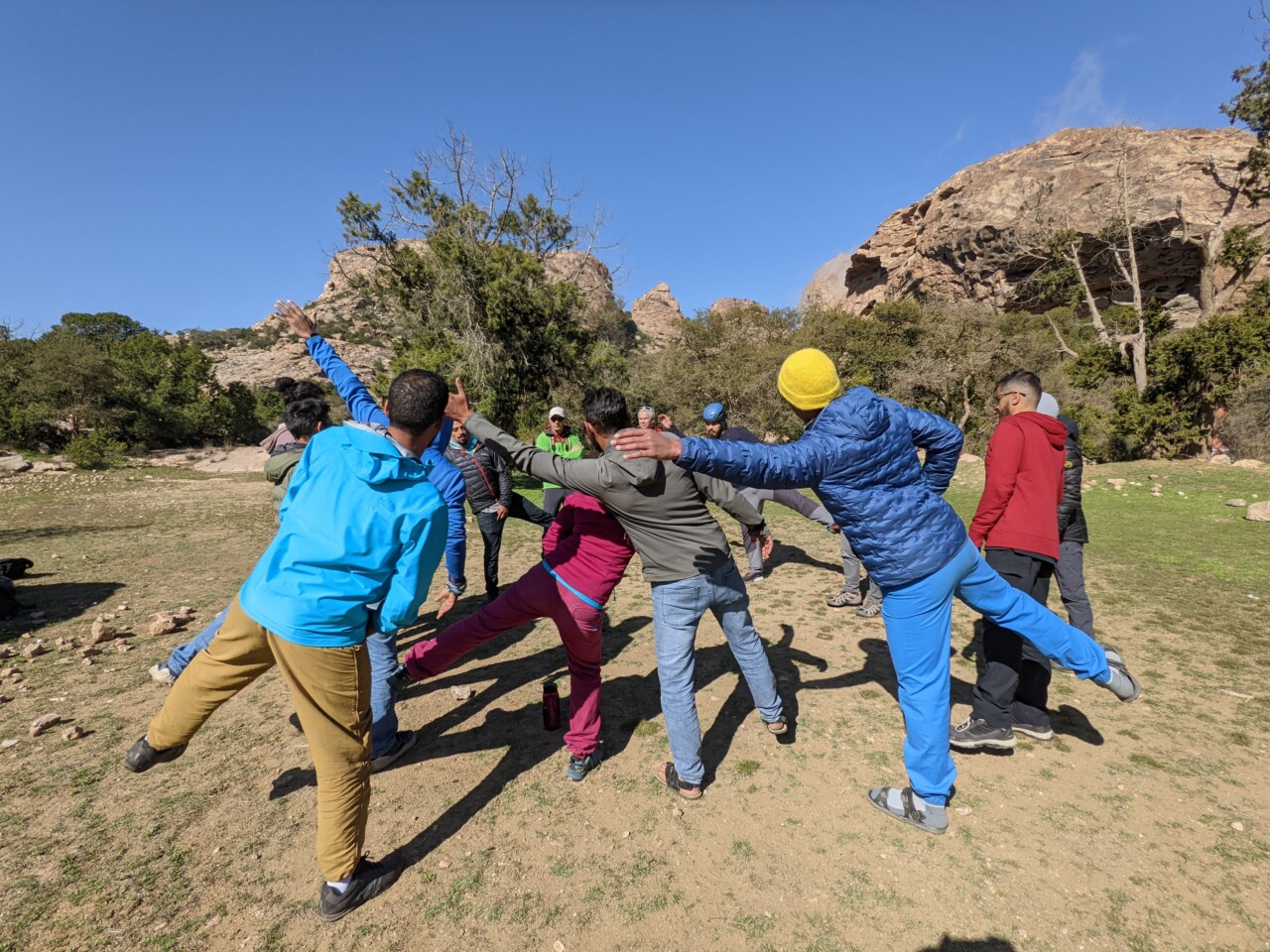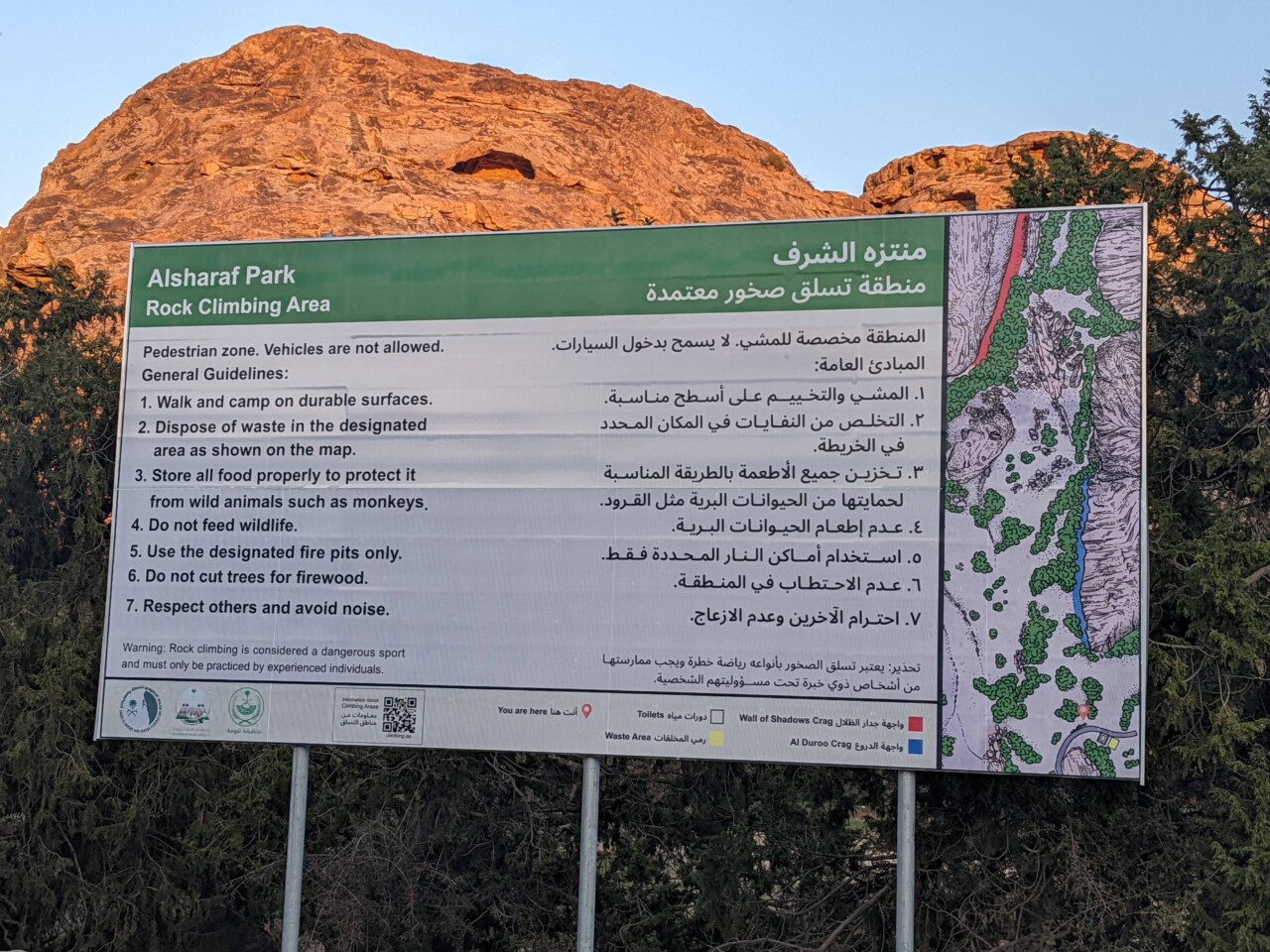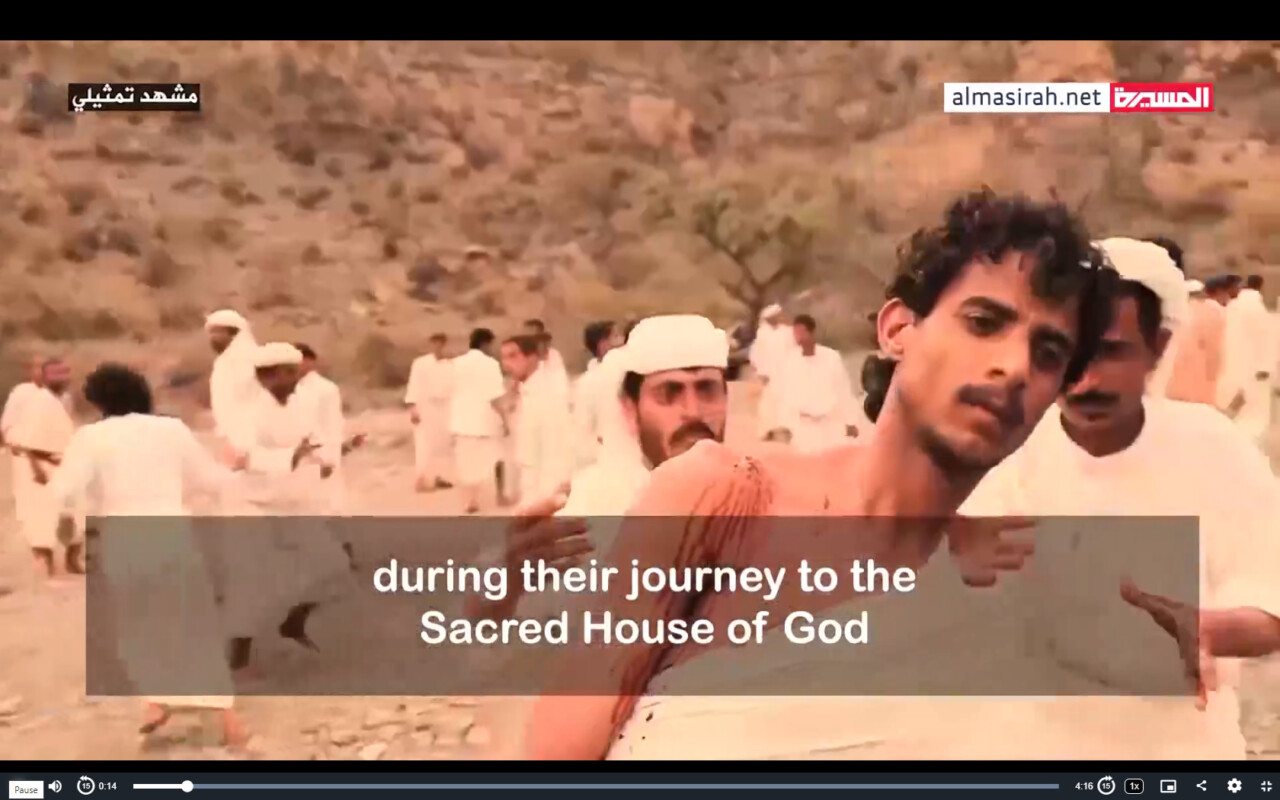Tanomah is located in the southwest of Saudi Arabia, at an altitude of 2200 meters. No desert to be seen. Warm air from the Red Sea condenses into thick clouds of fog, creeping around grey rocks, surrounded by plenty of fresh greenery. ‘From Riyadh,’ answers a young man who is pitching his tent next to his enormous motorcycle on a camping field. Further away, there’s a toilet block.
If one ignores the gangs of baboons looting the region, it’s just like the Pyrenees. ‘Would you like a cup of tea?’ asks the young man, who has covered the 900km from Riyadh in four and a half hours. ‘Maybe five. No, no problems with the police. I always remove my license plate.’
‘Do you know that the Saudis in Tanomah slaughtered three thousand Yemenis?’ a Yemeni friend from the ever larger diaspora messages me via WhatsApp, as I crawl into my own tent in the evening. ‘Somewhere in 1935. Bandits, but also the regular army. The Yemenis were on a pilgrimage to Mecca. Piracy, that’s what the Saudis lived off, before they discovered oil.’
Asking around in Tanomah only results in shrugs. If you type Tanomah into search engines, you get offers for spectacular climbing tours, among extremely voluptuous ladies offering massages. Today, Tanomah is a cool and calm refuge, a sort of Davos in Saudi Arabia.
The Tanomah massacre is a hundred years old next week, I recently learned from the website of al-Masirah, the channel of the North Yemeni Houthi regime. The Houthis are a family from the Hashemite caste, direct descendants of the Prophet Mohammed. Hashemite kingdoms also exist in Morocco and Jordan (and briefly once in Iraq), but they are Sunni. These Hashemites are Shiite.
The Hashemite kingdoms in Jordan and Iraq were established after the legendary kingdom of Sharif Hussein from the Hejaz – the region around Mecca – was expelled by the non-Hashemite gang of the Saud family, the founders of modern Saudi Arabia.
Only at what is now the border with Yemen did the advance of the Sauds stop, roughly where the Houthis originate. The Houthis were then a relatively insignificant Hashemite branch in the Zaydi Imamate, a Shiite theocracy that controlled large parts of North Yemen in the thousand years between the tenth and twentieth centuries, in changing alliances with local tribes.
Revolutions worldwide also put an end to that Imamate in 1962, after which Yemen gradually transformed from a promising democracy into administrative quicksand, where corruption was rampant. And then the Arab Spring arrived in 2011. In the power vacuum that followed, the Houthis seized power.
Houthis are pariahs in the diplomatic world, seen as a variant of the Taliban. In the world of anti-imperialists – against the West and everything that smells of capitalism – the Houthis are considered heroes.
Reminiscent of Che Guevara in Latin America or the Vietcong in Asia, the ragged, long-haired fighters of the Houthis led a heroic guerrilla war against the Saudis. In this anti-imperialist narrative, those Saudis are a tool of the US and the West, in the conspiracy of the (Zionist) Capital against all peoples on earth.
With the Houthis, Yemen has seamlessly joined the list of resistance countries such as Russia, Iran, China and Syria, whose leaders never receive criticism from anti-imperialists. The Houthis are happy with this, as it conveniently distracts from the real conflict in Yemen and their own harsh and discriminatory regime.
The Houthi slogan loudly proclaims: God is the greatest. Death to America. Death to Israel. Curse upon the Jews. Victory for Islam. Not on the list, but also often voiced, is the innate hatred of Saudis against Yemenis. On his deathbed, founder King Abd al-Aziz Al Saud is said to have whispered to his many sons: ‘Keep Yemen weak, keep Yemen divided.’ Whether true and excuted or not, the outcome seems to be quite successful so far.
Another recurring element in Houthi propaganda is the massacre of Tanomah. On July 1, 1923, it is claimed that in the valley where the town is located, three thousand Yemeni pilgrims on their way to Mecca were slaughtered by Saudi troops, in the name of Abd al-Aziz.
‘It definitely happened,’ says Alexander Weissenburger (35), associate researcher at the Austria Academy of Sciences. I ended up with Weissenburger when I finally wanted to know the truth, through a short list of Yemen experts. Some of them had never heard of Tanomah.
Arabist Weissenburger does. He mainly studied texts from Yemen, but also from Saudi Arabia and cables from British diplomats, in which Abd al-Aziz was asked what exactly happened. ‘He acknowledges that unfortunately, an accident happened, committed by the Ikhwan, a tribal militia that the king founded and frequently used in his conquests. But that the properties of victims were returned, with apologies.’
Weissenburger considers the Saudi narrative plausible because, in the 1920s, the Ikhwan were known for their massacres, even in the north of Saudi Arabia, towards Iraq.
Later, says Weissenburger, the radicalized Ikhwan turn against the king. Together with the British, the king defeated the Ikhwan in 1929 and dissolved the militia. Afterward, all blame could be shifted onto the Ikhwan. ‘This is the current position of the Saudis.’
There is also a version in which not pilgrims, but soldiers from Yemen are defeated. This was an era where authority over the Asir-region switched between the Imam from Yemen, the old sharif Hussein from Hejaz, and his enemies, the Sauds from the east. The Yemeni army, in that version, was coming to help defend sharif Hussein against the Sauds. ‘Less plausible,’ thinks Weissenburger. ‘Because it was the pilgrimage season.’
In the Yemeni, or better: Houthi versions, it is the Saudis who lead the Ikhwan -here they are called Al-Ghatghat- due to the inherent, eternal Saudi enmity against the Yemenis. This partly stems from religious motives, many North Yemenis are Zaydi Shi’ites and thus apostates, according to hardline Sunnis. In these Houthi versions, the massacre of Tanomah also prominently serves as an exam Abd al-Aziz hast to take for his American, Western, and Zionist benefactors, because in their worldview, he is undoubtedly their agent.
Weissenburger: ‘That Tanomah happened is certain. Exactly how, and how many victims were counted, is unclear. There are versions with 500, 3000, even 5000 and 7000. Then we’re only talking about rijaal: men. The number three thousand is generally accepted.’
Three years ago there was a first centennial, because the Islamic calendar is eleven days shorter. According to the Julian calendar, today July 1 it is exactly a century since the massacre at Tanomah took place.
Coincidentally, it is pilgrimage season as it was then, and Tanomah can be vividly remembered again. Weissenburger: ‘This sits in the collective memory of the Yemenis. For example, when school children die from a Saudi bombardment or something else unpleasant. The Houthis don’t even have to mention it, the connection with Tanomah is automatically there.‘
Here you can read an extensive Hourhi-Yemeni version of the Tanomah history in English, here you can watch a video on al-Masirah and here you can read an English article on al-Masirah
Read the original Dutch version of this article and more about Yemen and Saudi Arabia at abumelle.org







